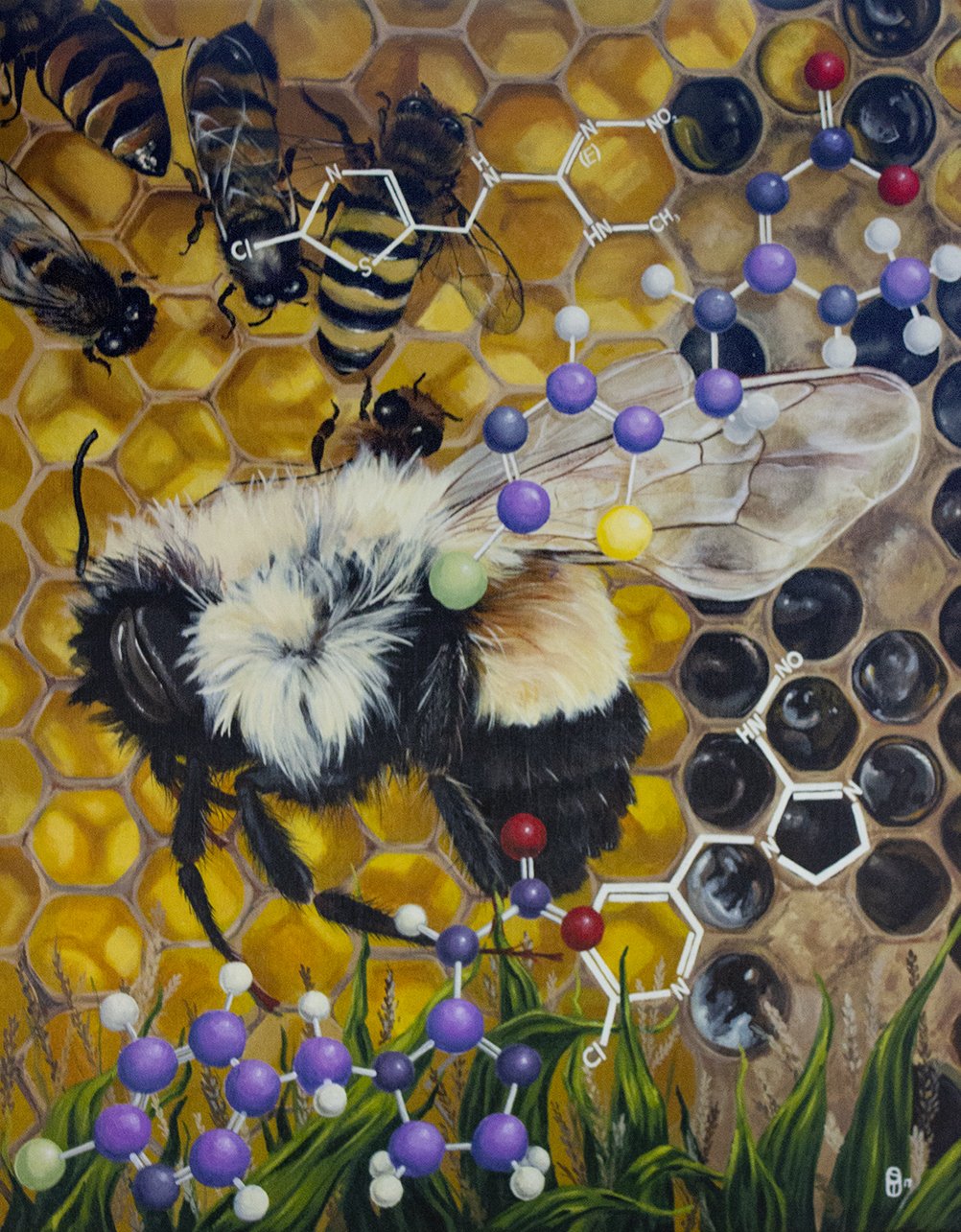Colony Collapse // 22x28" // Acrylic // 2017
Colony Collapse Disorder has gone by many names over the years, but until recently, no one had a clue why it happened. It affects semi-domesticated honey bees and occurs when most of the healthy workers abandon a normally functioning hive which causes the queen, nurse bees, and brood to die off. From 2007 to 2013, over 10 million hives were lost worldwide, leading to widespread economic losses and serious questions about homogenous farming practices. A class of pesticides called Neonicotinoids, or 'Neonics', is the culprit. Neonics were thought to be safe for bees, birds, and small mammals, but many studies since 2007 have indicated otherwise. It is thought that they interfere with the bees' ability to learn and remember navigation routes, leaving them confused, lost, and unable to find their way back to the hive. And the problem is not just the bees used on our farms; wild bees are also affected along with many other beneficial insects. These chemicals are also toxic to birds, suppressing their appetite and causing them to lose weight. Neonics have contributed to and may be the main reason for the dramatic decline in songbird populations in the US, especially those species that feed on crop seeds and insects. Corporations such as Bayer, Monsanto, Syngenta, and Shell developed and continue to manufacture these poisons despite study after study showing their harm. Their use for agriculture is either banned or tightly controlled in the EU, yet they continue to be used in the US. If we continue to kill off honey bees, our main pollinators, not to mention birds and other species, we run the risk of creating unnecessary food shortages and seriously damaging ecological food chains required for a healthy planet.

